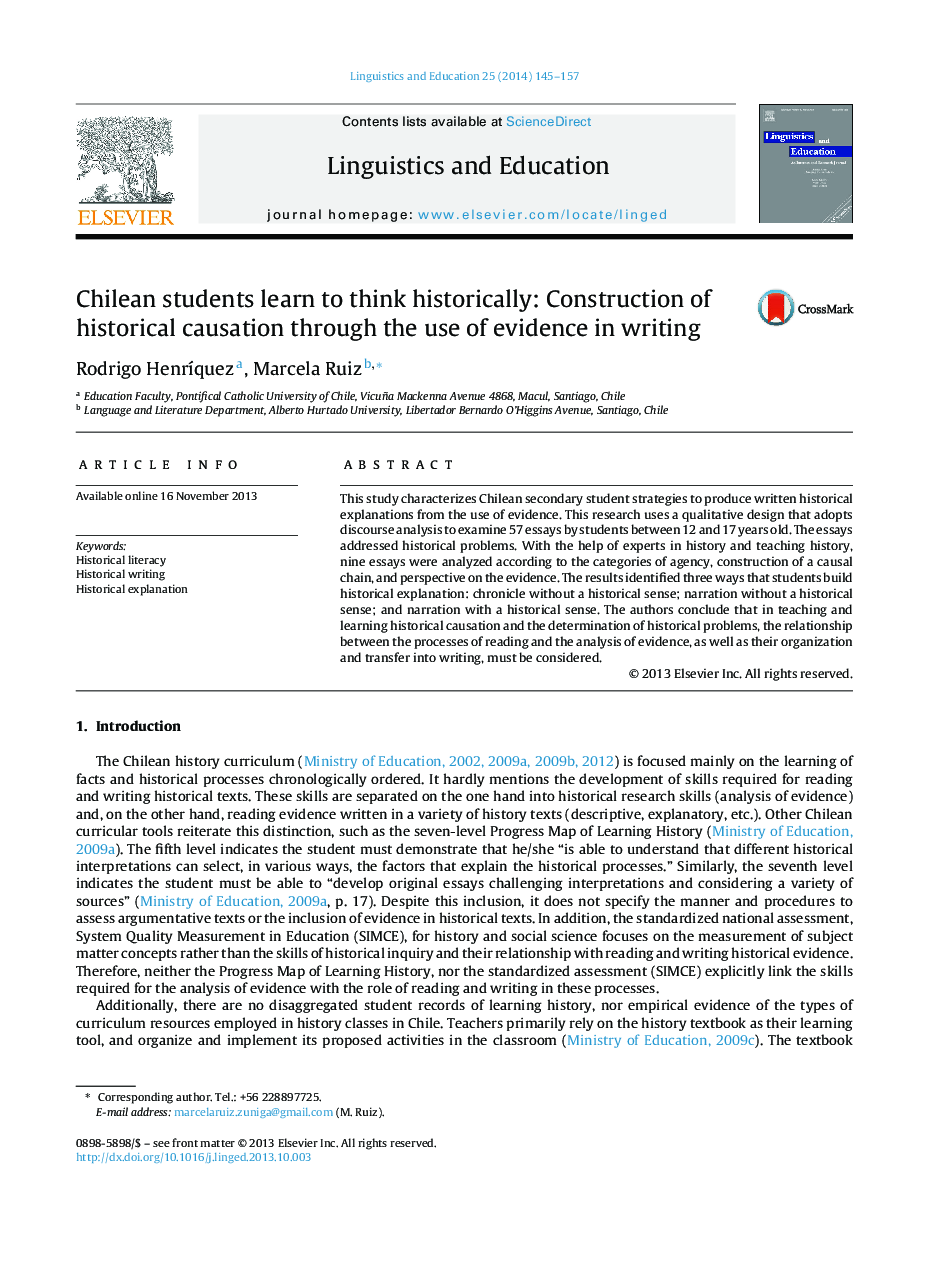| کد مقاله | کد نشریه | سال انتشار | مقاله انگلیسی | نسخه تمام متن |
|---|---|---|---|---|
| 366162 | 621352 | 2014 | 13 صفحه PDF | دانلود رایگان |
• The results identified three ways that students build historical explanation.
• The first way chronicle without a historical sense.
• The second way narration without a historical sense.
• The third way narration with a historical sense.
This study characterizes Chilean secondary student strategies to produce written historical explanations from the use of evidence. This research uses a qualitative design that adopts discourse analysis to examine 57 essays by students between 12 and 17 years old. The essays addressed historical problems. With the help of experts in history and teaching history, nine essays were analyzed according to the categories of agency, construction of a causal chain, and perspective on the evidence. The results identified three ways that students build historical explanation: chronicle without a historical sense; narration without a historical sense; and narration with a historical sense. The authors conclude that in teaching and learning historical causation and the determination of historical problems, the relationship between the processes of reading and the analysis of evidence, as well as their organization and transfer into writing, must be considered.
Journal: Linguistics and Education - Volume 25, April 2014, Pages 145–157
